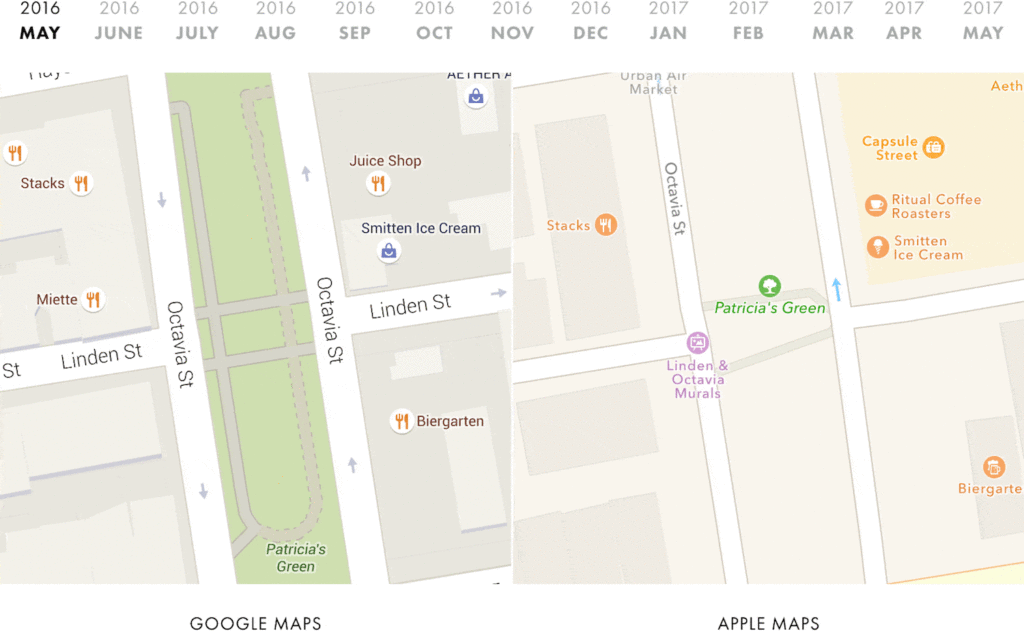
Google Maps vs. Apple Maps: Report card of a year-long comparison
Both Google and Apple keep updating their map apps periodically with fancy new features. From remembering where our car is parked to packing in a punch of indoor mapping capabilities, they have been there, done that. But what’s the most basic thing users require from a map? That it should be able to tell them where something is located with unfailing accuracy. After all, what good is a map that keeps cycling through businesses plotted at the same location? Sadly, that’s exactly what Apple Maps has been doing.
Justin O’Beirne, who has worked on maps at Apple and has been blogging about cartography for years, undertook a rather interesting project recently. From May 2016 to June 2017, he tracked the map apps of Google and Apple to see how a San Francisco location changed on the maps over time. He documented his findings in an essay which shows how the maps have evolved over the past year with still images and mesmerizing GIFs.
His conclusion? “It’s cool to see how much Google Maps has changed over the past year. But it’s also surprising to see how little Apple Maps has changed.”
To be fair, on Apple’s map, places are added and removed on a monthly basis. Google does the same. But, Google’s month-to-month changes are only half of what Apple is churning out. Now, does that mean Apple is updating its map more often?
Not necessarily, according to O’Beirne who took a hard look at three businesses located next to each other. While Google has a distinct location for each business, Apple plots them at the same location. And then as the months pass by, Apple keeps toggling between the businesses, leading to a surge in the number of places it adds on or removes from its map.
Now, it’s up to you whether you want to commend Google for using computer vision and machine learning to update addresses through its Street View cars, or blame Apple for its dependence on TomTom for mapping data (and a possibly buggy geocoder). The reality is that Apple still has a long way to go before it catches up with Google. Apple also recognizes this and has stepped up efforts to make its location data better, including mulling the use of drones to update maps faster.
But as O’Beirne’s analysis clearly shows, not only has Apple bungled at ground zero by not being able to populate its maps with quality data, it has been pretty lazy with the map interface as well. While Google took the pain to make its data display as user-friendly as possible over the last year by doing everything from tweaking color schemes to changing the contrast, Apple did absolutely nothing!
“Over the course of a year, Google quietly turned its map inside-out – transforming it from a road map into a place map. A year ago, the roads were the most prominent part of the map – the thing you noticed first. Now, the places are,” O’Beirne notes. This, of course, would also help Google to make money off its maps, as CEO Sundar Pichai recently revealed.
Back in 2012, when Apple Maps debuted, they were so inaccurate and crummy that CEO Tim Cook had to issue a public apology. “We are extremely sorry for the frustration this has caused our customers and we are doing everything we can to make Maps better… Everything we do at Apple is aimed at making our products the best in the world. We know that you expect that from us, and we will keep working non-stop until Maps lives up to the same incredibly high standard,” Cook said. Seems like four and a half years have not been enough for Apple to deliver on that promise.
Now read: Why would you use OpenStreetMap if there is Google Maps?








